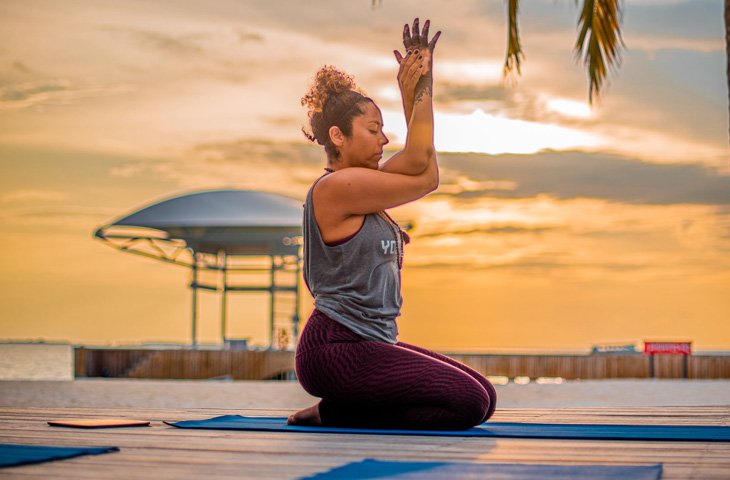Program Design: 4 Little Changes That Will Make a Big Difference With Your Retreats
As part of our recent Retreat Planning Video Series, we connected with Diana Stobo for some inspiration around retreat itineraries and program design.
Diana is the owner of The Retreat Costa Rica, an award-winning luxury resort and spa in Alajuela, Costa Rica.
As a successful entrepreneur, innovator in the global wellness industry, nutrition expert, and retreat leader, Diana has a deep understanding of what it takes to run a successful retreat while bringing balance and transformation to people’s lives.
Often, small changes can have a great impact on your clients’ experience. Taking from her knowledge and expertise, Diana shares ideas on four little changes that can make a big difference for your retreats, helping you create an immersive, healing, and connected journey.
Advice As You Begin Designing Your Retreat Program
Before turning to your itinerary and program design, Diana shares some gentle reminders for retreat leaders.
Ultimately, your clients show up for you.
They trust you and admire you as their teacher, and want to spend time with you in classes and personal space.
Keep in mind that constantly being there for everyone and giving the best of yourself at all times is a challenge in itself: one that you should be ready for.
It helps to understand participant’s general energy and receptiveness as the retreat goes on.
Diana shares her theory on the journey that your guests might follow as they progress through a ten-day retreat.
At first, they may find themselves having to shed what’s familiar for them and move towards a new comfort zone.
At this point, they’re also energetic and eager to do and see everything.
By day four, they’ve learned to surrender themselves to their environment and begin to rest and relax.
And by day five, change occurs.
It starts with a physical change that in turn prompts mental and emotional clarity.
By day seven, your guests feel a sense of accomplishment and pride in themselves for what they’ve achieved so far.
Finally, by the ten-day milestone, they’re ready to take what they’ve learned home and now have the tools to integrate their new knowledge into their everyday lives.

In Diana’s experience, it’s the last three days of a ten-day retreat that truly impart change and long-term commitment from guests. They’ve essentially come out the other side renewed and with the fresh perspectives they were looking for.
Four Small Retreat Program Design Changes That Can Have A Big Impact
To help transformation take place, there are a few things you can consider in the itinerary and retreat design:
1. Allow Space For Time Alone Or Community Time
Your clients want to spend individual time with you and by themselves during the retreat. But, you also need to take them away from their personal bubble so they can connect with the group as they also experience healing here.
So, if you are hosting yoga classes, for example, it can be a good idea to combine yoga and community classes where people can connect with you and one another. Creating this sense of community allows everyone to benefit from the exponential power and energy of the group.
2. Recognize How Important Food Is In The Experience
Food plays such a big part in how your participants feel and respond to their retreat experience. When doing your retreat program design, it’s important to be mindful of what the group wants and what your getaway is setting out to do for them.
Do you want to provide a cleanse, detox, or anti-inflammatory diet to guests? Does the menu need to fuel intense exercise, cater to vegans, and come from the surrounding local community?

All of this is so important to consider so you can prepare your guests ahead of time. Serve up tasty and nourishing food that allows them to feel their best and think and move clearly.
3. Be Mindful Of Overly Busy Schedules
Diana emphasizes the need to give your guests enough time to rest without overloading the schedule. They will want to slow down and take a moment to enjoy the experience before moving onto the next point in the itinerary.
Space out the class times in the program design so that there is no need for participants to rush from one thing to the next. Having one activity after the other can be tiresome for the group.
Instead, allow for free time where everyone can relax and spend extra time in the spa, take slower meals, or even lounge around their rooms for longer.
4. Encourage Body Movement
Getting your retreat-goers to move their bodies in either gentle or demanding ways, depending on their abilities, is how they will stir their energy throughout the day.
You might lead one high-intensity class per day, while the other is restorative. Again, it comes down to what your guests want for themselves and the purpose of your retreat.
The main idea is to remove any reasons for not moving.
If you want to catch the entire session with Diana, watch the video below.
Final Thoughts
These four small retreat program design changes can significantly impact the retreat experience. They create space for added learning, improve how your participants feel and connect with their bodies during their stay, and allow them time to let go of behaviors that no longer serve them.
When these things happen, you can drive transformation and help your clients establish everyday practices that improve their lives and have a lasting impact.
New resources, straight to your inbox
We’re committed to your privacy. WeTravel uses the information you provide to us to contact you about our relevant content, products, and services. You may unsubscribe at any time.



